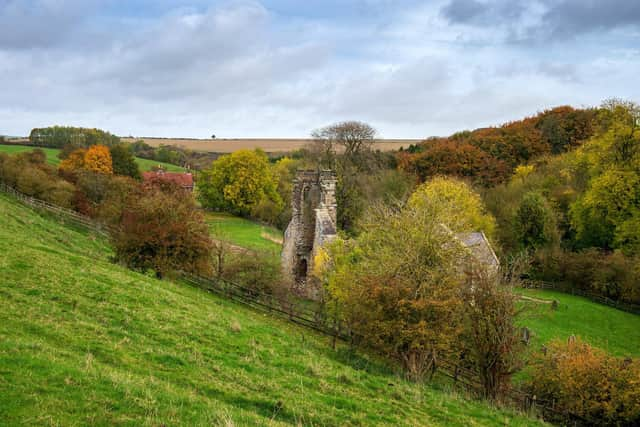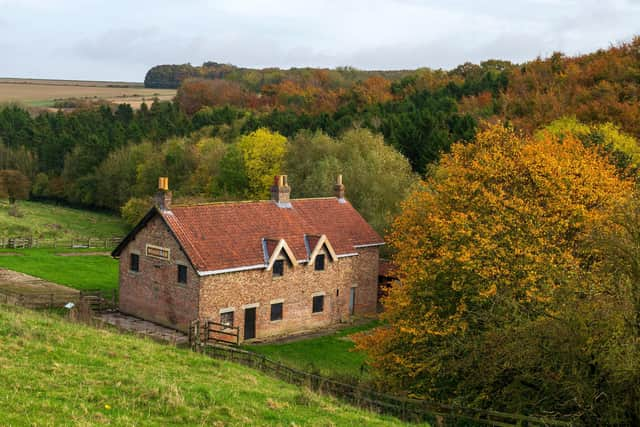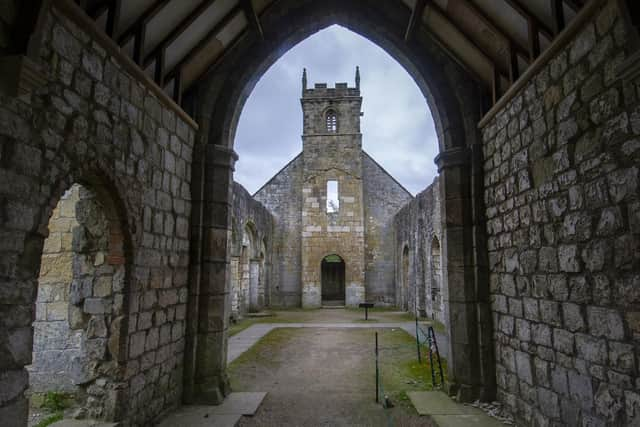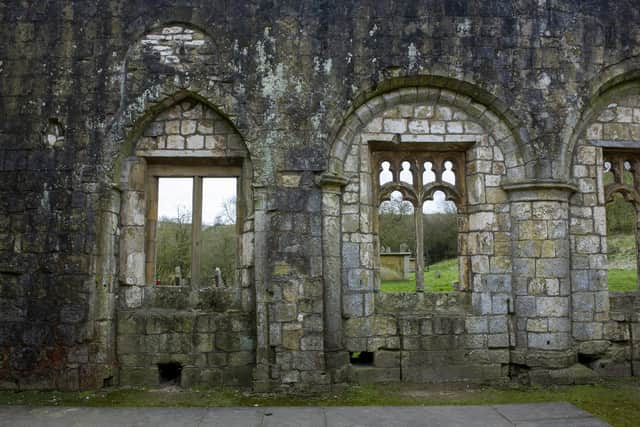Village Focus: The rise and fall of a deserted medieval village in North Yorkshire still continues to fascinate
To get to Wharram Percy you would have to know where you were going, how to get there and what you were looking for – the only way you would stumble on the place is if you were on a very off-piste long walk in the depths of Yorkshire Wolds countryside somewhere between Malton and Driffield.
There are 3,000 known deserted villages and ever since 1948 there has been intensive research into Wharram Percy, making it one of the most well-known in Europe.
Advertisement
Hide AdAdvertisement
Hide AdIt is said to have been founded in the 9th or 10th century and was at its peak between the 12th and 14th centuries but from the 1600s inhabitants started to flee, either because of abandonment in favour of other opportunities or forced evictions.


By 1931 there were only 40 people living there and today there are none.
In a world where there is everything on your doorstep from 24 hour supermarkets and takeaways, bright lights and busy roads – the silence here is tangible save for the only residents which are wildlife.
St Martin’s Church is the most obvious of the ruins that are left and when you stand inside it looking at the walls, the windows, the carvings you can feel the presence of history.
Advertisement
Hide AdAdvertisement
Hide AdThe tower collapsed in 1959 prompting excavations which would reveal a smaller, mid-11th-century stone church and an earlier, mid- to late 10th-century, timber building.


It is almost consuming and eerie, especially if you have delved deeper into the back story of this fascinating place, which surely has to be one of Yorkshire’s best.
There is room for debate as to when people started to inhabit Wharram Percy with a reference in the Domesday Book of 1086 recording it as 'Warran' or 'Warron'. The suffix 'Percy' stems from the prominent, aristocratic family that owned the area during the Middle Ages.
But, according to English Heritage which now manages the remains of the village, the earliest settlement could have been in about 50 BC when a settlement was established alongside an ancient east–west track crossing the valley. Part of this evolved into a larger farmstead which was abandoned in the fifth century.
Advertisement
Hide AdAdvertisement
Hide AdOther experts believe that a scatter of small buildings with sunken floors represent an early village, which can be dated to the seventh century because of artefacts found, while others say the buildings were temporary huts put up by lowland farmers for sheep and that a permanent settlement wasn’t established until the 9th or 10th century.


By 1086 William the Conqueror had confiscated Wharram and granted holdings to Osbert the Sheriff with some land given to William de Percy, an important Norman baron. The Percys who acquired the lordship of Wharram were a minor branch of this family and by 1176 one William Percy was a major owner in the village.
He acquired the remaining rights to Wharram in 1254 becoming all-powerful within the village and the name Wharram Percy probably came into use soon after.
Over the next few years Percy built the North Manor and more houses but by the 14th century the decline of Wharram Percy would begin.
Advertisement
Hide AdAdvertisement
Hide AdPeter Percy II died young, leaving no male heir and his daughter was made a royal ward, which allowed the Crown to control the estate until she reached the age of 14 in 1327. She married to Walter Heslerton but he was killed in 1349 by the Black Death and the plague also dramatically reduced the already small village population.


After this the Percy family no longer lived in the village and by 1368 the buildings of the North Manor were dilapidated and worthless while just 30 houses were now occupied.
Changes to farming preferences followed and sheep farming became more popular than arable, but, for small villages like Wharram Percy it paved the way for further decline of the community.
There was less work, less food, less crops and so residents were forced to move to find these necessities in other places.
Advertisement
Hide AdAdvertisement
Hide AdIn its historical accounts of Wharram Percy, English Heritage talks of a testimony referring to the eviction of four families from Wharram and the destruction of their houses by Baron Hilton in about 1500.
That was thought to mark the final act of depopulation and that there would have been evictions that went unrecorded. In lawsuits of 1555–6 relating to the rebuilding of the vicarage after a fire, none of the witnesses lived in Wharram.
In 1573 another William Hilton sold the manor which passed through several hands until the 6th Baron Middleton, whose successor still owns the site, bought it in 1833.


The names of the fields that covered the site of the village in the late 18th and 19th centuries – Water Lane, Towngate and Town Street – attest to a continued folk memory of its existence, English Heritage says.
Advertisement
Hide AdAdvertisement
Hide AdA first edition of an Ordnance Survey map for the area was produced in 1850 which seemed to have prompted interest in Wharram Percy and what may be there and what the groundworks may represent.
The most modern period of research into Wharram began when economic historian Maurice Beresford visited in June 1948. Excavations took place every summer from the 1950s until 1990, and a book which drew on the many years of research and accounts was published in 2012.
A 2004 study of a sizeable collection of human skeletal remains, excavated from the churchyard of the deserted village, reveals details of disease, diet and death in the rural medieval community.
If you visit now, the remains of St Martin’s are easily visible and the outlines of around 30 properties can also be made out.
